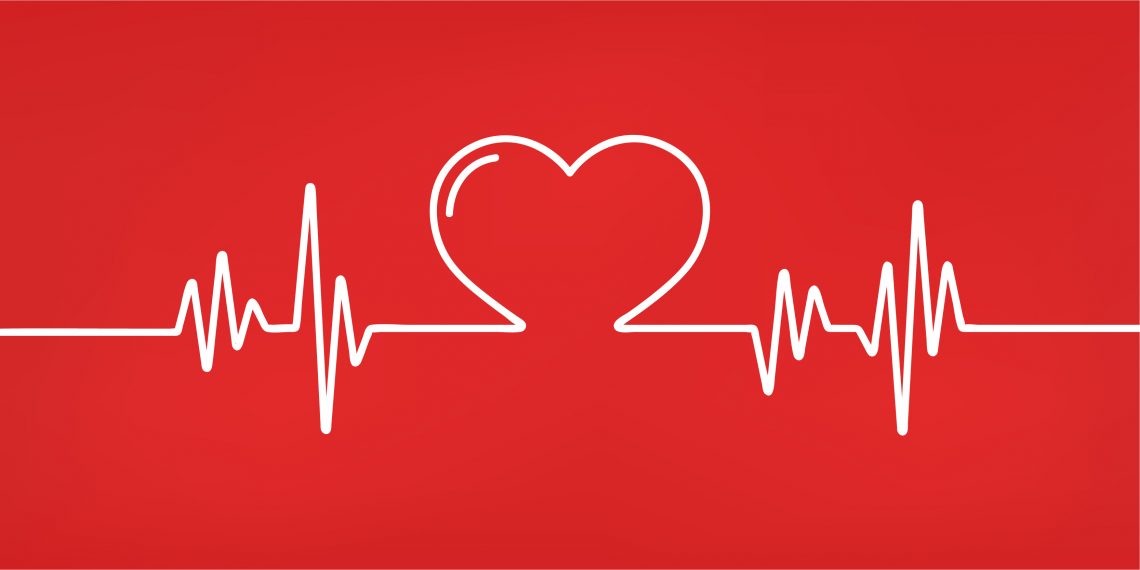Mayo Clinic announced a new technology platform and launched two new companies April 14 that promise to improve doctors’ ability to spot disease early by connecting data from remote medical devices with AI-enabled algorithms. The first target is the heart.
“The dramatically increased use of remote patient telemetry devices coupled with the rapidly accelerating development of AI and machine learning algorithms has the potential to revolutionize diagnostic medicine,” Dr. John Halamka, President of the Mayo Clinic Platform said during a press briefing attended by The Innovator. If the Mayo Clinic’s new platform lives up to its promise, it could transform healthcare from being episodic to a continuous service that helps patients identify diseases before they even occur.
Anumana – one of the new companies launched this week -will initially focus on designing state-of-the-art neural network algorithms based on billions of relevant pieces of heart health data in Mayo Clinic’s Clinical Data Analytics Platform, including millions of raw electrocardiogram (ECG) signals. The aim is to unlock hidden biomedical knowledge that will enable early detection and treatment of heart disease
“ECGs have been read and notated manually by physicians for more than a century,” Anumana CEO Murali Aravamudan said in a statement. “Our augmented intelligence technology, in the hands of scientific and clinical experts, will enable a comprehensive translation of the language of the heart. We think of it as the Rosetta Stone for cardiac medicine.”
The Mayo Clinic’s newly announced Remote Diagnostics and Management Platform includes the use of algorithms as “software as a medical device,” an established U.S. Federal Drug Administration (FDA) approval pathway. These algorithms raise many new ethical and standards questions for the medical sector. To help address some of those questions the Mayo Clinic will host a virtual conference April 22 with 100 world leaders in government, academia and industry, to look at what the nature of consent looks like in the age of AI as well ethical issues surrounding the gathering and use of data and how to best reinforce, protect and respect people’s preferences. The world-famous clinic is also looking to set standards for algorithms in healthcare. It is working on what it calls a “universal nutrition-type label.” Just as foods have labels that list what they are made of and number of calories Mayo believes healthcare algorithms should have labels that explain in what areas they are fit for purpose, where they were developed and tested and on which populations, says Dr. Halamka.
In addition to regulatory, ethical and standards issues the key to the success of its new platform will depend on successfully integrating medical algorithms into existing clinical workflows.
Anumana’ algorithms can work with existing ECG devices, says David McMullin, the company’s Chief Business Officer at Anumana and Chief Strategy Officer at nference. Anumana, which means inference (a conclusion reached on the basis of evidence and reasoning) in Sanskrit, is owned by Mayo Clinic and nference, a company that Mayo Clinic has invested in that extracts biomedical data and transforms it into insight. Nference’s work powers Anumana, which deciphers ECGs in ways never before possible, using technology and data. It is the first of many potential spin-offs from nference.
“Partnering with Mayo to unlock the language of the heart is a great place to start,” says McMullin. “The heart has so much to tell us that we were not able to see before,” he says. “An ECG contains data that is indecipherable to humans but can reveal the state of a person’s health.”
Anumana has trained algorithms on the massive Mayo Clinic repository of clinical data to read these signs and transmit them to physicians, alerting them to what unseen diseases and conditions may be indicated in a patient’s ECG. “What we are doing is not only developing the tools, but by integrating them into medical devices at the point of care we are also enabling delivery to healthcare workers for practical use with patients,” says McMullin.
Undiagnosed heart disease affects millions of Americans and people across the globe, notes Dr. Paul Friedman, chair of the Mayo Clinic’s Department of Cardiovascular Medicine in Rochester, Minnesota and the leader of a team that pioneered the development of the first AI-based ECG algorithm. The team received emergency use approval of an AI-based ECG algorithm to detect left ventricular dysfunction in COVID-19 patients. Anumana said it aims to develop and commercialize many other types of ECG algorithms.
For conditions such as a weak heart pump, silent arrhythmias, or a thickened heart pump, well established, effective, evidence-based treatments exist that can prevent heart failure, stroke, or death, Dr. Friedman said during the press briefing. They key is to detect the disease even before symptoms develop to prevent these events from occurring. The addition of AI to the ECG, a ubiquitous and inexpensive point of care test that is already integrated into medical workflows, “makes this approach good for patients, convenient for clinicians, and massively scalable,” he said.
The formation of the second new company– Lucem Health – is aimed at ensuring that wearables that track vitals, such as heart rhythms, will also be able to feed data into algorithms. Lucem, a joint venture between Mayo Clinic and Commure, a venture-backed company that helps innovators accelerate delivery of next generation healthcare experiences, aims to provide the overall platform for connecting remote patient telemetry devices with AI-enabled algorithms developed by Anumana, Mayo Clinic, and other suppliers. It will also be responsible for integrating the diagnostic insights generated by these algorithms into clinical workflows.
Multiple ECG algorithms are already under development. McMullin said Anumana, which recently raised $25.7 million in Series A financing led by founders nference and Mayo Clinic along with Matrix Capital Management, Matrix Partners, and NTTVC, is hoping to have its first heart focused algorithm approved by the FDA as soon as next year. While the technology is new the science is established and peer reviewed, says Anita Kawatra, nference’s Chief Corporate Affairs Officer. Anumana will commercialize its algorithms on its own or with partners.
Once it gets the necessary regulatory approvals the Mayo Clinic said it plans to sell its new platform solution globally to hospitals, clinics and any place that provides ECGs. The hope is that public and private health insurance companies will include such tests in their coverage, Dr. Halamka said.
IN OTHER NEWS THIS WEEK
HEALTH
Microsoft paid $19.7 billion for Nuance, a provider of conversational AI and cloud-based ambient clinical intelligence for healthcare providers. Speech-recognition software, like that developed by Nuance, is emerging as an important new opportunity in medicine as doctors seek to speed up documentation of patient work with dictation rather than getting bogged down taking notes. The move is part of a shift to natural language processing by business. From virtual assistants to call center attendants, voice is beginning to rival text as the primary computing interface.
SUSTAINABILITY
Startup Using New Approach To Lithium-battery Manufacturing Raises $20 Million From Industry Players
Battery Resourcers, a vertically integrated lithium-ion battery recycling and manufacturing company, completed a $20 million Series B equity round with financing led by Orbia Ventures, the venture capital arm of the multinational Orbia, and participation from other investors including,TRUMPF Venture, Doral Energy-Tech Ventures and Jaguar Land Rover’s InMotion Ventures. Unlike other battery recycling companies, Battery Resourcers offers a fundamentally new approach to lithium-ion battery manufacturing, starting with a mixed stream of used lithium-ion batteries and ending with the production of finished, battery-ready cathode active materials. With 97% metal recovery, Battery Resourcers can produce Nickel Manganese Cobalt (NMC)-based cathode active materials with 35% reduction in cost, 32% reduction in emissions, and 13% reduction in energy consumption compared to the production of virgin cathode. The company is also engineering a novel process for graphite recovery and purification, which will enable it to return both the cathode and anode active materials back to manufacturers of new batteries.
Engie to develop hydrogen fuel cell powertrain which could decarbonize mining operations
Mining3 and Engie are exploring the development of a new hydrogen fuel cell powertrain for heavy-duty mobility within the mining sector. Under the Hydra Consortium, the mining industry research organization and energy company are aiming to decarbonize the mining sector and have identifed the utilization of hydrogen for heavy-duty mobility as a key factor to achieve this target.
Mastercard Unveils Carbon Calculator For Banks
Mastercard has teamed up with Swedish fintech Doconomy to develop a carbon calculator that banks can integrate into their apps to give customers a snapshot of the emissions generated by their purchases across spending categories. Mastercard and Doconomy have been working on carbon footprint tracking based on purchases for the past couple of years but are now offering it to banks around the world, which can integrate the calculator into their apps through new APIs.
RETAIL
German E-Commerce Pioneer Aims To Build ‘Amazon On Steroids’
German entrepreneur Ralf Wenzel, formerly of Delivery Hero and Softbank, is launching a global rapid delivery retail platform, entering a field that is attracting huge investment and experiencing explosive growth. The startup, called Jokr, is backed by venture capitalists HV Capital, Tiger Global and Softbank, and will aim to deliver a wide range of products from “hyperlocal” warehouses within 15 minutes of an order being placed via a smartphone app.Jokr is already live in Mexico City, Lima and Sao Paolo. New York and Bogota will follow ahead of rollouts across Europe and Latin America. “We are building an Amazon on steroids,” Wenzel told Reuters in an April 15 interview.
Ocado Takes Grocery Automation To The Next Level
After inking a deal to work together almost three years ago, U.S. supermarket chain Kroger and U.K. online grocer Ocado took the wraps off the first major product of that deal. Kroger has launched a new Ocado-powered customer fulfillment center in Monroe, Ohio, outside of Cincinnati, a gigantic warehouse covering 375,000 square feet and thousands of products for packing and delivering Kroger orders from online shoppers.Built with a giant grid along the floor, “the shed”, as Ocado calls its warehouses, will feature some 1,000 robots alongside 400 human employees to pick, sort and move items. It is expected to process as much as $700 million in sales annually, the sales of 20 brick-and-mortar stores. Ocado also announced this week that it is taking a £10 million ($13.8 million) stake in Oxbotica, a UK startup that develops autonomous driving systems. Ocado is treating this as a strategic investment to develop autonomous systems that will work across its operations, from vehicles within and around its packing warehouses through to the last-mile vehicles that deliver grocery orders to people’s homes. It says it expects the first products to come out of this deal — likely in closed environments like warehouses rather than open streets — to be online in two years.
MOBILITY
Intel subsidiary Mobileye is ratcheting up its autonomous vehicle ambitions and getting into delivery.
The company said April 12 it struck a deal with Udelv to supply its self-driving system to thousands of purpose-built autonomous delivery vehicles. The companies said they plan to put more than 35,000 autonomous vehicles dubbed Transporters on city streets by 2028. Commercial operations are slated to begin in 2023.
FOOD AND AGRICULTURE
Hazel Technologies announced that it has raised $70 million from backers that include Temasek. Hazel uses technology to extend the shelf life of fruits and vegetables and in doing so cut down on food waste. Its packaging insert, called a sachet, gets placed in bulk boxes of produce after harvest. The sachet emits 1-methylcyclopropene (1-MCP) gas to inhibit ethylene, which plants produce they age. Different crops have different respiration rates and production levels of ethylene, so there are different sachets for different produce types. Currently, Hazel has sachets for 14 different produce types, including avocados, mangos, plums, pears, and cantaloupe. In December of 2020, the company announced Hazel Root, designed to slow the growth of sprouts in potatoes and other root vegetables.
FINANCIAL SERVICES
Mobile Bank N26 Moves Into The Insurance Market
Berlin-based mobile bank N26 is moving into the insurance space, offering customers the option to purchase coverage, manage plans and initiate claims in-app for a range of insurance plans from different providers. The launch of the new on-demand smartphone insurance is the first of a series of planned product launches rolling out to N26 customers in Europe that will include home, life, travel, private liability, bike, electronics and pet insurance over the coming months.
France’s Societe Generale Issues The First Structured Product on Public Blockchain.
On April 15th, Societe Generale issued the first structured product as a security token directly registered on the Tezos public blockchain. The securities were fully subscribed by Societe Generale Assurances, according to a press release sent to The Innovator. The operation follows in the footsteps of a first covered bond security token issuance worth €100 million on the Ethereum blockchain, settled in euros in April 2019, and of a second covered bond security token issuance worth €40 million that was settled in Central Bank Digital Currency (CBDC) issued by Banque de France, in May 2020. The latest transaction completes a new step in the development of Forge, a regulated subsidiary of Societe Generale Group that aims to offer crypto assets structuring, issuing, exchange and custody services to the group’s professional clients by next year. The bank said this month’s experiment demonstrates the legal, regulatory and operational feasibility of issuing more complex financial instruments on the public blockchain.
To access more of The Innovator’s News In Context articles click here.






